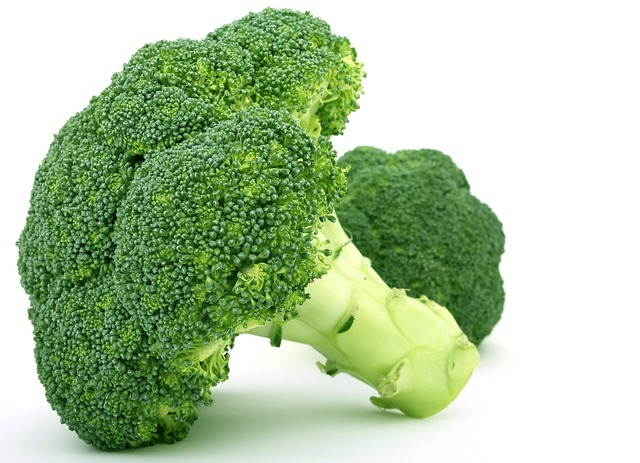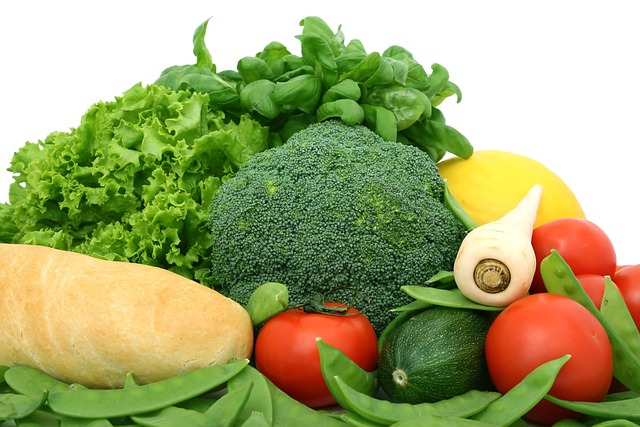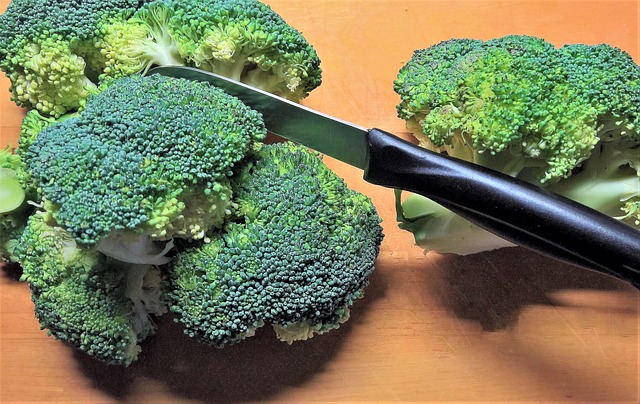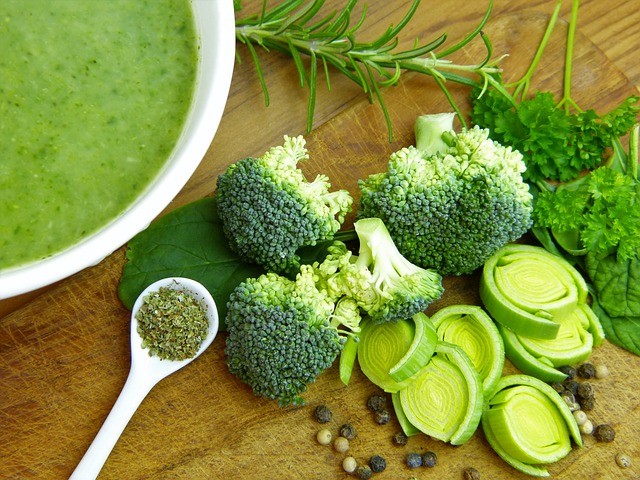Discover expert tips for cultivating thriving broccoli in your garden, from ideal planting conditions to nurturing care for optimal growth and harvest yields.
5 Steps to Broccoli Planting Success
- Choose a sunny spot away from strong winds.
- Prepare your soil with organic matter like sheep pellets and compost.
- Add a layer of vegetable mix to plant into. Broccoli can be planted in autumn, early winter and early spring, depending on your region.
- Plant broccoli at least 50cm apart.
- Feed your broccoli over the growing season with vegetable food and water regularly.
Dive into a full guide below on the best way to grow broccoli at home!

I’m truly excited about the idea of growing broccoli, and I think you should be too. It’s not just because of broccoli’s status as a superfood, packed with vitamins and minerals. The truth is, cultivating broccoli in your own garden can be rewarding, yielding fresh produce that surpasses anything you’ll find in the store.
Broccoli, part of the cruciferous family which includes cauliflower and kale, has a growing cycle that can adapt to various climates. Its versatility means that, with the right knowledge, you can be successful in growing it, whether your garden enjoys the warmth of the sun year-round or ebbs and flows with the four seasons.
With that said, timing is particularly crucial. Broccoli thrives in cooler weather, making early spring or fall the best times to plant. To establish a deft hand at broccoli cultivation, you must get to grips with its life cycle and the seasonal nuances that make all the difference between a satisfactory yield and a fantastic one.
For my ultimate grow guide head over here for a look
Choosing Your Broccoli Variety: A Guide to Seeds Selection
Selecting the right variety of broccoli for your garden is crucial. The choice you make affects not only the taste and size of your broccoli but also its resistance to pests and its suitability for your climate. Here’s a closer look at how to choose the best seeds for your needs.
Broccoli comes in several varieties, each with unique traits. Calabrese broccoli, often seen in grocery stores, is popular for its large, green heads. For something a bit different, try sprouting broccoli which produces smaller heads but offers a longer harvesting window. If you’re dealing with warmer climates, consider heat-tolerant varieties.
The debate between heirloom and hybrid seeds often confronts gardeners. Heirloom seeds are open-pollinated and can produce plants true to the parent, offering consistency in future generations. They are often revered for their flavor. On the other hand, hybrids are crossbred for specific characteristics, such as disease resistance or higher yield. Deciding between the two depends on your priorities: is taste, tradition, and potential seed saving more important, or are you looking for robustness and consistency?
Having a reputable source for your seeds is vital for your broccoli’s success. Ensure you purchase from respected nurseries or seed banks that offer quality and germination guarantees. Sometimes, local gardening groups can be a source of excellent seeds and tailored advice for your regional conditions.
Now, with your carefully chosen seeds in hand, you’re ready to move on to the next crucial step: preparing your garden to become the perfect broccoli-growing habitat.

Preparing Your Garden for Broccoli Success
Success with broccoli starts long before the seeds even hit the soil. Proper bed preparation is key to healthy plants. The right soil conditions can make the difference between a lackluster crop and a bountiful harvest. Broccoli thrives in well-drained, fertile earth with a pH between 6.0 and 7.0. You can get a simple soil test kit to make sure the pH is in this range.
Adding compost to your garden will work wonders. It enriches the soil, improves its structure, and encourages beneficial microbial activity. If you’re making your own compost, remember to start the process months in advance. Otherwise, quality commercial compost is an excellent alternative.
Spacing is important. Broccoli needs room to grow. Plant seeds about half an inch deep and seedlings around 18 inches apart. Rows should be spaced 24 inches apart to give plants ample room. This spacing helps with air circulation and lets sunlight reach all parts of the plant, reducing the risk of fungal diseases.
Finally, remember to water the prepared bed before planting. This settles the soil and provides a moist environment for seeds and seedlings to start strong.

Nourishing Your Broccoli Plants: Water, Nutrients, and Sunlight
Growing broccoli isn’t just about planting seeds and waiting for them to sprout; it’s about nurturing. Proper nourishment will make the difference between just growing and growing the best broccoli possible. Let’s focus on the three essentials: water, nutrients, and sunlight.
Broccoli needs consistent moisture to flourish, but not so much that you drown it. Aim for soil that is moist to the touch. A good rule of thumb is to water deeply once or twice a week, allowing for slight drying between waterings. This approach encourages deep root growth.
Now, on to nutrients. Broccoli is somewhat of a heavy feeder and will thrive with periodic fertilization. Start with a balanced, organic fertilizer when you plant. Consider a nitrogen-rich feed partway through the growing season, as this has a starring role in leaf growth.
Sunlight tends to be the ultimate maestro in the symphony of gardening, with broccoli it’s no different. These plants love the sun, needing about 6 to 8 hours of direct sunlight daily. If you’re planting in an area with hotter climates, some afternoon shade can prevent overheating.
With your broccoli now well on its journey of growth, it’s time to think about protection. In the next section, we’ll cover how to safeguard your crop from unwanted guests and circumstances that could threaten your hard work.
How to set up a raised garden bed

Protecting Your Broccoli Crop: Pest and Disease Management
Growing broccoli can be very rewarding, but it’s not without its challenges. Pests and diseases can quickly turn a thriving garden into a sorry sight. As a gardener, I see the need to be proactive in defending your greens. This section will cover some essential tips to keep your broccoli plants healthy and productive.
Broccoli is quite attractive to a range of pests. Cabbage loopers, aphids, and flea beetles are just a few of the critters that might take an interest in your plants. I recommend using floating row covers to physically block pests from reaching your broccoli. This method is effective and avoids the use of harmful chemicals. For natural deterrents, consider planting strong-scented herbs like rosemary or sage nearby, which can help repel bugs.
Diseases in broccoli plants often manifest as discolored spots on leaves or stems, wilting, and stunted growth. To limit disease, ensure good air circulation by spacing the plants properly, and by keeping the foliage dry during watering. Implementing a drip irrigation system can be quite beneficial in this respect.
Crop rotation is another vital practice. Don’t plant broccoli or other brassicas in the same spot year after year. This can prevent soil-borne diseases and nutrient depletion. Also, companion planting can boost your broccoli’s defense system. For instance, planting onions around your broccoli can deter some pests due to the onion’s strong odor. By paying attention to these strategies, you not only protect your current season’s crop but also contribute to the long-term health of your garden.
Remember, meticulous care in managing pests and diseases sets the stage for a bountiful harvest. As your broccoli heads reach their peak, you’re entering the final stretch. Timely harvesting and proper storage are critical to enjoy the fruits of your labor. With a well-maintained garden, you’ll be ready to transition smoothly into the final phase: bringing your fresh, homegrown broccoli from garden to table.

For more information about broccoli head over here to wikipedia
Harvesting and Storing Your Broccoli: From Garden to Table
I take pride in knowing when my homegrown broccoli is ripe for the picking. The transformation from tiny seedlings to robust, edible florets is an exciting phase for any gardener. When the heads are firm and tight, just before the yellow flowers start to bloom, it’s time to harvest. Cutting the central head at a slant ensures minimal damage, and this encourages the side shoots to continue producing more florets for later harvests.
After the initial harvest, my broccoli plants don’t call it quits. They work hard to give me smaller, yet equally delicious side heads for weeks to come. Regular harvesting also keeps the plants productive. It’s a rewarding cycle that speaks volumes about the resilience and generosity of these plants.
Once harvested, I immerse the broccoli in cold water to preserve its vivid green hue and snappy texture. I then store it in the crisper drawer of my refrigerator, as this will keep it fresh for up to a week. If I have an abundance of broccoli, I blanch and freeze it, which allows me to enjoy the fruits of my labor for months. The key here is to avoid washing the florets until you’re ready to use them, to prevent any premature spoilage.
And there you have it, a journey from seed to fork that’s laden with the anticipation of fresh, crisp, homegrown broccoli. It’s a straightforward process that brings immense satisfaction and nourishment to me, as I hope it will for you. By following these steps and paying attention to the peculiar needs of these plants, you’ll have a bountiful broccoli harvest that you can savor, share, and be proud of.
Follow to stay up to date with new posts!
Our website contains affiliate links. This means if you click and make a purchase, we may receive a small commission. Don’t worry, there’s no extra cost to you. It’s a simple way you can support our mission to bring you quality Gardening Tips.
Last Updated on February 12, 2025 by Mitch

